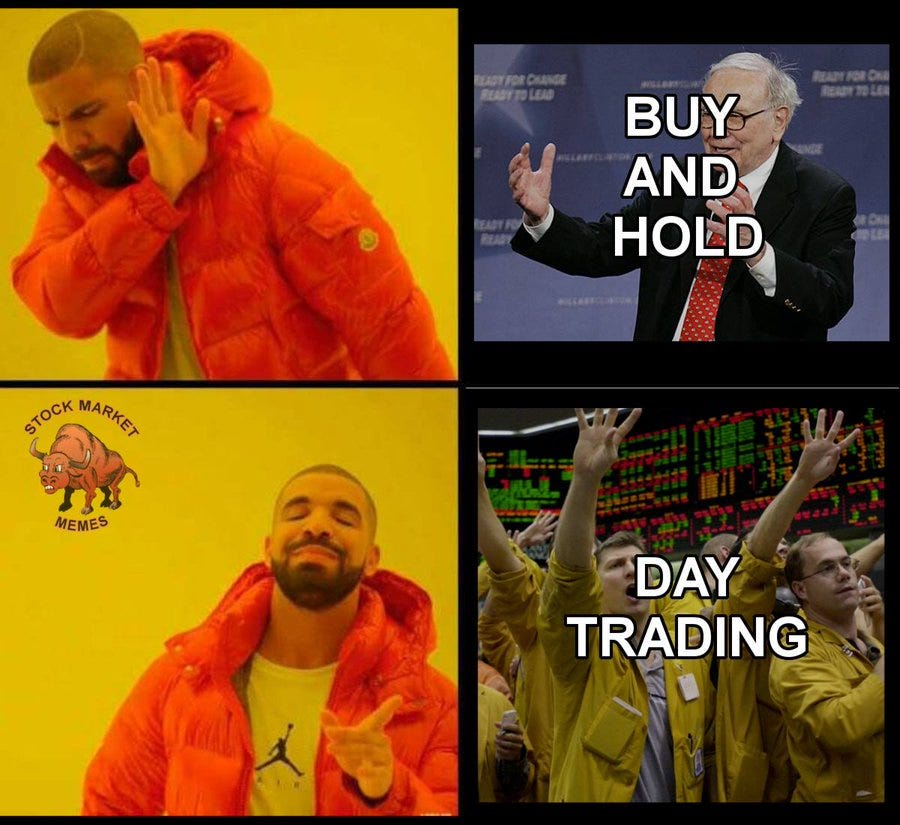Don't look back in anger
Edition 20. The throwback edition.
And here comes the 20th edition of the newsletter!

It has been a fun journey. Thank you to all the 175+ subscribers who have joined along the way and to many of you who take time out to tell me what is good and what is not. It has given me a boost whenever I feel like slacking off.
Let’s keep it going, and as always, don’t have all the fun alone! Share the newsletter in your networks.
Typically, I focus on a topic a week. Switching things up, this week I look back on some of the posts that I had written to see what has changed.
I have divided today’s edition into updates and have also linked those old posts in case you would like to check them out.
Let’s dive in!
Stock markets have been in a tear – watch out for China.
I had written about the deft behind-the-scenes interventions that saved the global financial system in March, boosting the stock markets globally. I had also covered the rise of ‘Robinhood day traders’ whose actions sent the shares of the bankrupt Hertz on a meteoric rise.
The markets have since continued their upward journey fuelled by the increasing participation by retail investors. In the US, the top trading brokerages added a cumulative 4 million new accounts by March.
In Thailand as of May, ~150,000 new accounts were opened - a number greater than total new accounts opened in 2019. In the Philipines, the rate of account opening has increased 3x from the pre-COVID average and in India 1.8 million new accounts have been opened since March. Many of these new account holders have piled onto the stock market in the hope of making a quick buck.

The same trend is being seen in China too. Less than 10% in the country own stocks but since the market is largely closed to the world, it is driven largely by these retail investors who seem to have been swept up by a wave of nationalism.
A front-page editorial in the Securities Times on Monday (6th July) said that fostering a “healthy” bull market after the pandemic is now more important than ever.
The investors have responded in kind. The stock market has added $1 trillion in value in the last 10 days, significantly outpacing any other market globally, and reaching heights not seen since the bubble of 2015.

In a classic sign of frenzy, the investors are purchasing stocks using debt that is registering the fastest pace of growth since January 2015. So strong has been the demand that online brokerage apps are struggling to cope.
2015 was not a good year for the Chinese economy managers. The stock market was talked up in 2014 by the media. Local investors devoid of avenues for investment went on a debt binge buying stocks and pushing the market up. As these stories go, the bubble popped. Notice the sharp drop in the market in 2015 in the chart above. It saddled millions with deep losses and the image of Chinese policymakers as competent economy managers took a beating.
Careful to avoid a repeat of that scenario, the regulators have cracked down on illegal debt trading financing platforms. Influential business papers are also now running headlines cautioning investors.
Yet, the Euphoria, for now, continues unabated.
Meanwhile, things continue to be weird in the US. This is Nikola’s share price.

What is Nikola?
It is an electric truck company that has sold no trucks. In fact, the company expects no revenues until 2021. Yet, its stock rose dramatically, making it more valuable than Ford - an automotive behemoth clocking $115 billion in annual revenue. Tesla is named after Nikola Tesla, and that stock is on its own bull run which has little to do with market fundamentals. I suppose that fairy dust rubbed off on ‘Nikola’?
Sweden was wrong after all
Contrasting India’s approach of declaring the largest global lockdown, I had looked at 3 countries that had taken a different approach - Iceland, Sweden, and Taiwan.
Sweden in particular stood out, opting for the untested ‘herd immunity’ strategy to fight COVID-19. Notice the lack of restrictions compared to its Nordic neighbors.

Turns out, it was the wrong strategy.
More than three months later, the coronavirus is blamed for 5,420 deaths in Sweden, according to the World Health Organization. Per million people, Sweden has suffered 40 percent more deaths than the United States, 12 times more than Norway, seven times more than Finland, and six times more than Denmark.
The economy is doing no better.
Sweden’s central bank expects its economy to contract by 4.5 percent this year, and the unemployment rate jumped to 9 percent in May. This is more or less how the damage caused by the pandemic has played out in Denmark, where the central bank expects that the economy will shrink 4.1 percent this year, and where joblessness has edged up to 5.6 percent in May.
In short, Sweden suffered a vastly higher death rate while failing to collect on the expected economic gains.
Ironically, in the face of mounting death tolls, Sweden has now imposed social distancing norms that are more strict than any of its neighbors. And the strategy is working. The death rates are falling and new caseload is reducing.
Again, a reminder that ‘economy vs lives’ framework is a false choice. The virus needs to be contained if people are to resume their normal economic activities.
Luckin continues to befuddle
I had covered the incredible fraud at Luckin coffee. I recommend you do read the piece in full if you haven’t, to understand what chutzpah truly means. It is a tale worthy of a Hollywood blockbuster that involves the management inflating their sales, average order value, and to cover up a lack of profits, inflating the costs as well. The house of cards was eventually brought down by a dogged investigative agency and COVID.
Disgraced by the scandal, the chairman and co-founder, Charles Lu was booted out of the board while the NASDAQ stock exchange delisted the stock (making them unavailable for trade).
Somehow, Luckin is not done yet. The shares can still be traded over the counter (i.e. directly between people off the exchange), and the share price has somehow *doubled* since the delisting.

Few are making a case to buy the stock. The reasons include that the fraud has been accounted for and it can be a serious player in a country with growing coffee culture.
I would stay away. But then, what do I know?

The resurgence of oil
Oil was headed for trouble with its futures dipping below zero. It was of course an event emanating from a set of compounding factors and the quirks of US-traded oil futures (West Texas Intermediate to be precise) as I had covered here.

The rebound in the Chinese economy and the cuts from oil-producers led the price to settle at ~$40/barrel. Yet, there is a fascinating debate playing out between two camps on the future of oil prices.
One camp (let’s call them Greens) believes that oil demand has permanently decreased. According to Greens, the world has permanently changed. More people will work from home and fewer will take flights. On the whole, the demand will see a drop, and oil prices will stay low for the foreseeable future.
The other camp (Bulls) believes that ‘the changing world’ narrative is overdone. Renewables will not replace oil quickly enough and energy demand will pick up. Once it picks up, the supply will not keep pace with it since there has been a permanent loss of oil-producing capacity as oil producers have folded up during COVID. According to the Bulls, increasing demand and limited supply will lead to prices shooting up and $150/barrel looks like a possibility over the next 5 years.
The outcome of this debate will reshape our world. Let’s hope the Greens win.
India is trying to woo migrants back
30 million migrants - a fifth of the total urban workforce have returned to their villages during the COVID-19 induced lockdown. From my piece looking at why migrants walked home -
India sees ~25% of its workforce – ~100 million people migrating annually in search of work. It includes circular migration as well. Circular migration refers to going to a place in search of work and returning home within the year. Casual conversations with Ola /Uber drivers will often reveal that they hold farmlands in rural India and go back during the harvest season.
Many migrants, away from their homes, hence faced outright hunger as the lockdown was imposed. They were compelled to take the perilous path back home.
Source: Jan Sahas survey of 3,000+ migrant workers
This was actually a story about the deep distress in agriculture facing India.
The migrants are the driving force behind many of the service industries and essentials such as construction. Yet, we have made them invisible from our discourse around job creation, and social benefits such as PDS. As a welcome step, the government is now looking to change track.
India has approved a plan to develop affordable rental housing for migrant workers after millions of laborers fled the nation's cities for villages amidst coronavirus lockdowns that left many of them without jobs and homes. The scheme, a part of a federal housing project aimed at providing housing for all by 2022, aims to convert existing vacant government housing into affordable rental housing complexes (ARHC). Private developers can also participate. The program will benefit about 300,000 workers initially, according to the Ministry of Housing and Urban Affairs.
As per a study, 30% of the migrants do not wish to return to the cities owing to their nightmarish experience during the COVID induced lockdown - a scenario that would spell doom for industries and our cities. Let’s hope that it does not come true.
That is all for the week. If you enjoyed my deep dive and the memes, please share the newsletter on Twitter, Whatsapp (or maybe LinkedIn?). Getting the word out helps me get more diverse feedback which in turn makes this newsletter better. So, do share! Write to me at romitnewsletter@gmail.com or Twitter.



Nice. Congratulations 🎉 on your 20th piece